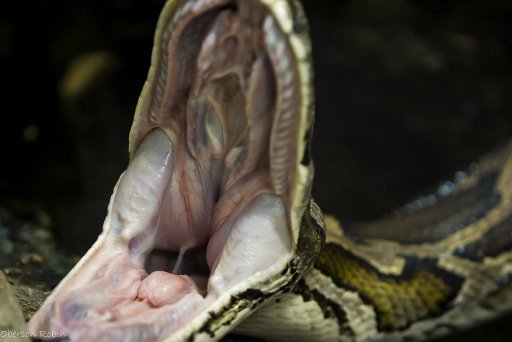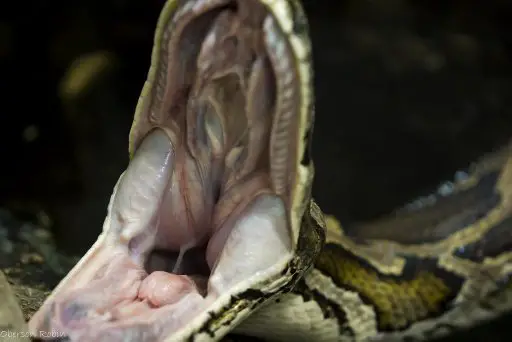Boas are fascinating creatures that have captured the imagination of people for centuries. From their impressive size to their unique way of hunting, there is no doubt that boas are one of the most intriguing species on earth. But have you ever wondered if boas have teeth?
The answer to this question is not as simple as you might think. While boas do have teeth, they are not like the sharp, pointed teeth that you might expect. In fact, boa teeth are quite different from those of other animals, and their unique structure has helped them to become successful predators in their native habitats. So, let’s explore the world of boa teeth and discover what makes them so special.
Yes, boas have teeth! Boas are constrictor snakes that have several rows of small, backward-facing teeth in their mouths. Unlike venomous snakes, boas do not use their teeth to inject venom into their prey. Instead, they use their teeth to grasp onto their prey and prevent it from escaping. Boas’ teeth are not designed for chewing, so they swallow their prey whole.

Do Boas Have Teeth?
Boas are a family of non-venomous snakes that are found in various parts of the world. They are known for their size and strength, and are often kept as pets by snake enthusiasts. One of the questions that many people have about boas is whether or not they have teeth. In this article, we will explore this question in detail.
What Are Boas?
Boas are large, heavy-bodied snakes that belong to the family Boidae. They are found in various parts of the world, including South and Central America, Africa, and Asia. Boas are known for their size and strength, and some species can grow up to 13 feet in length. They are also known for their docile nature, which makes them popular pets.
Do Boas Have Teeth?
Yes, boas do have teeth. However, their teeth are not like the fangs of venomous snakes. Boas have small, curved teeth that are designed to grasp and hold onto their prey. Their teeth are not used to inject venom, as boas are non-venomous.
What Do Boa Teeth Look Like?
Boa teeth are small and curved, and are located in the upper and lower jaws. The teeth are not very sharp, but they are strong enough to hold onto prey. Boas have rows of teeth in their mouths, and they can replace their teeth throughout their lives.
How Do Boas Use Their Teeth?
Boas use their teeth to grasp and hold onto their prey. Once a boa has caught its prey, it will wrap its body around the animal and constrict it until it dies. The teeth are not used to inject venom, as boas are non-venomous.
What Do Boas Eat?
Boas are carnivorous and eat a variety of prey, including rodents, birds, and small mammals. They are also known to eat larger animals, such as deer and pigs. Boas are ambush predators, which means they wait for their prey to come to them.
How Do Boas Kill Their Prey?
Boas kill their prey by constriction. Once a boa has caught its prey, it will wrap its body around the animal and squeeze it until it dies. Boas have powerful muscles that allow them to constrict their prey with incredible force.
Benefits of Owning a Boa
Owning a boa can be a rewarding experience for snake enthusiasts. Boas are docile and can make great pets for those who are interested in reptiles. They are also relatively easy to care for, as they do not require as much attention as other pets.
Boas vs. Other Snakes
Boas are often compared to other snakes, such as pythons and corn snakes. While they share some similarities, boas have their own unique characteristics. Boas are larger and stronger than many other snakes, and they are known for their docile nature.
Conclusion
In conclusion, boas do have teeth, but they are not like the fangs of venomous snakes. Boa teeth are designed to grasp and hold onto prey, and they are not used to inject venom. Boas are fascinating creatures that can make great pets for those who are interested in reptiles.
Frequently Asked Questions
Boas are fascinating creatures that belong to the Boidae family of snakes. They are known for their large size, strength, and ability to constrict their prey. One of the most commonly asked questions about boas is whether or not they have teeth. In this article, we’ll answer this question and more.
Do boas have teeth?
Yes, boas do have teeth. However, their teeth are not like the sharp, pointed teeth that you might see in other animals. Instead, boas have small, curved teeth that are used to grip their prey. These teeth are not designed to tear or shred flesh, but rather to hold onto their prey while they constrict it.
The teeth of a boa are located in the upper jaw and are curved backward. This design allows the snake to grip its prey and prevent it from escaping. Once the prey is caught, the boa will use its powerful muscles to constrict it and suffocate it.
How do boas eat their prey?
Boas are constrictors, which means that they squeeze their prey to death before eating it. Once a boa has caught its prey, it will wrap its body around it and squeeze it tightly. This process can take anywhere from a few minutes to several hours, depending on the size of the prey.
After the prey is dead, the boa will use its teeth to grip onto it and maneuver it into its mouth. Boas have very flexible jaws that can expand to allow them to swallow prey that is much larger than their own head. Once the prey is inside the boa’s body, it will be slowly digested over the course of several days or weeks.
Are boas dangerous to humans?
Boas are not generally considered to be dangerous to humans. While they are large and powerful snakes, they are not venomous and do not pose a significant threat to people. However, it is important to remember that boas are wild animals and should be treated with respect.
If a boa feels threatened or cornered, it may hiss, strike, or bite in self-defense. While a bite from a boa is not likely to be fatal, it can be painful and cause swelling and bruising. If you encounter a wild boa, it’s best to give it plenty of space and avoid disturbing it.
How long do boas live?
The lifespan of a boa depends on a variety of factors, including its species, diet, and living conditions. In general, boas can live for anywhere from 20 to 30 years in captivity. However, some species have been known to live for up to 40 or 50 years.
To ensure that your boa lives a long and healthy life, it’s important to provide it with a proper diet, a clean living environment, and regular veterinary care. With proper care, your boa can be a beloved companion for many years to come.
What do boas eat?
Boas are carnivorous and primarily eat small mammals such as mice, rats, and rabbits. However, some species of boas have been known to eat birds, lizards, and even other snakes. In the wild, boas will hunt for their prey and ambush it by hiding in wait.
In captivity, boas are typically fed frozen and thawed rodents that have been purchased from a pet store. It’s important to make sure that the prey item is an appropriate size for your boa and that it is thawed completely before feeding. Feeding your boa a balanced diet is essential for its health and well-being.
Our Argentine Boa had Babies!!
In conclusion, boas do indeed have teeth, but they are not like the sharp, pointy teeth of other predators. Boas have small, backward-facing teeth that help them grip and swallow their prey whole. These teeth are not used for biting or tearing flesh like the teeth of other animals.
Despite the fact that they are not the most terrifying teeth in the animal kingdom, boas’ teeth are still an important part of their hunting arsenal. They allow them to grab onto their prey and hold on tight while they use their powerful muscles to constrict and suffocate them.
Overall, while boas’ teeth may not be as impressive as those of other predators, they are still an important part of their unique hunting strategy. So the next time you come across a boa, remember that while they may not be toothy terrors, they are still fascinating and formidable creatures.

